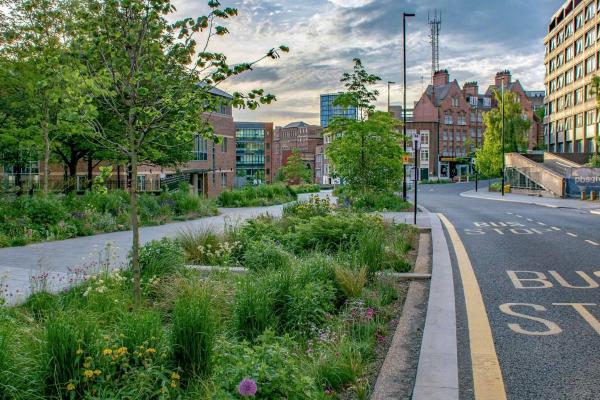Ecologically sensitive urbanisation?
A 10-city study of impacts of urbanisation on natural infrastructure in India
8 Feb 2023 by The Water Diplomat

Researchers at the India desk of the World Resources Institute have published a working paper on the effects of expanding built up areas on water bodies, plant cover and permeable open space. Urban areas all over the world are expanding, leading to the expansion of built-up areas at the expense of natural infrastructure that supports the functioning if the water cycle. Although it is widely recognised that current forms of urbanisation can aggravate water scarcity, lead to over-abstraction of groundwater and increase the risk of flooding, few studies have yet attempted to clearly identify pathways for improved sensitivity of urban planning to water issues. For the authors, using scientific evidence to accurately identify the correlations between urbanization, loss of natural infrastructure, and increasing climate shocks and stresses, creates options for the state and municipal authorities to strengthen urban planning and development in the future.
India in particular is a rapidly urbanising country, whose urban populatio9n is expected to double from 400 million people in 2018 to around 800 million in 2050. The researchers estimate that 70-80% of the infrastructure needed to support this change is yet to be built. The question, therefore, is what impact this will have on natural infrastructure. The study made use of open source, high resolution satellite imagery to estimate the changes in built up area across India’s 10 most populous cities between 2000 and 2015. The researchers also attempted to draw conclusions about changes in groundwater recharge potential.
The cities included in the study were Ahmedabad, Bengaluru, Chennai, Delhi, Hyderabad, Jaipur, Kolkata, Mumbai, Pune, and Surat. The trade-offs between the expansion of built-up areas and paved surfaces on the one hand, and ‘blue cover’, ‘green cover’ and recharge zones on the other hand are brought into focus across two types of regions. The study looks both at effects on regions that are located between 0-20 km from the city centre and those on regions located between 20-50 km from the centre.
It was found that the area located at 20-50 km from the centre develops particularly rapidly: in the period between 2000 and 2015, there was an increase in built up area of 134% as compared to the zone located at 0-20 km from the centre, which expanded by 44%. About 44% of this new development is located in areas with high and very high recharge potential. An estimated 300 billion litres of water is now diverted away from aquifers. Therefore, urban planners need to be sensitised to the importance of natural infrastructure in order to maintain urban water security as well as the integrity of the water cycle
